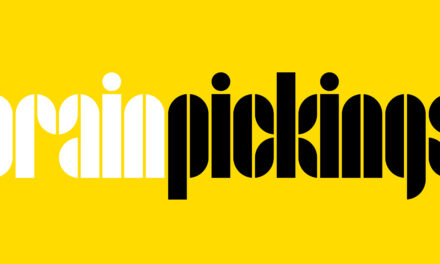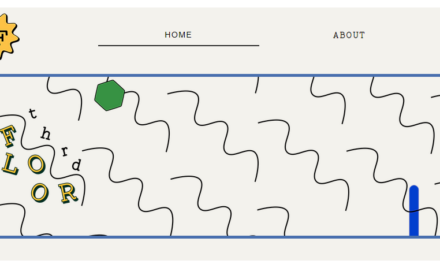
AUGUST 2, 2024
5 things to do
Give your revenue strategy a boost
Getting anyone to consume your content is an arduous task. But you’re only half way there if you want to see real revenue from your content. At CEX, Adam Schaeuble, entrepreneur of Podcasting Business School, shared five things to do to help boost your content business’ income.
1. Position yourself as an expert with credibility: People listen to creators who entertain or provide valuable information, but they mostly buy from people they (and others) trust as experts. They are likely to buy coaching sessions, membership packages, books, etc.
Think about what your content does to portray you as an expert voice. Adam starts every podcast with a 60-second testimonial from a happy client. Then, he includes it on his website. That third-party credibility helps audiences to decide to spend money without having to just rely on your confident presentation alone.
2. Follow the two-thirds rule: This may be the most important part of building your expert position. Be the expert in your content two-thirds of the time. Adam struggled early on to get his audience to invest in his services. He realized just interviewing people every episode left his listeners without any reason to pay for his advice. He was only proving that he could speak with experts. Once he switched to more solo episodes where he is the expert, Adam saw audience conversion spike.
3. Pick a single call to action: Too often, content entrepreneurs ask their audience to buy their services, like their posts, comment, email questions, follow them on every social media, and purchase the product of a sponsor or two. It’s too much.
When you overwhelm your audience with requests, you emphasize none of the CTAs and will struggle to see meaningful growth. Ask your audience to do one thing. Adam asks himself what his audience could do that would make the most impact in that moment and stays with that CTA for eight to 12 episodes.
Helpful Resource: CTA: Ask Your Audience To Do Something
4. Climb the content monetization pyramid: View your product and service offerings as a pyramid. The first level, which Adam dubs “start anytime,” represents the superpower of lesser-known creators. You can afford to give your audience direct access to you. A personal connection is massive in converting listeners to clients.
Next, you can focus on campaigns, like holding a boot camp or workshop. Then, come recurring offers like memberships. This is Adam’s favorite level of the pyramid because this money just keeps showing up.
Once your audience consistently totals about 500, your brand can attract level-four evergreen offers, such as affiliate marketing, brand partnerships, and sponsorships that cap the pyramid.
5. Set more informed income goals: Creators often error by chasing a revenue goal. But earning more money won’t mean that much if you don’t have any time to enjoy it or the freedom it provides. Adam worked himself into the hospital three times, making that mistake.
When you set an income goal, fill in this two-part sentence: “I want to earn $___________, by working _____ days a week.” Be just as diligent in tracking and sticking to your time goal as you are about the financial goal.
-Leo Bonacci
5 things from the tilt
- Lauren and Matt take listeners on a journey through self-publishing and traditional publishing. (Publish & Prosper)
- Entrepreneur and content creator Marcus Sheridan says the most important thing we can do with our content businesses (and our lives) is to find the simple purpose behind what we do. (Content Inc.)
- Joe and Robert discuss how Elon can’t follow his own rules. Plus, an incredible content marketing example from a California hospital. (This Old Marketing)
- Tilt Your Business podcast at 12 p.m. Tuesday. Join the chat!
- ICYMI: Don’t Let Impostor Syndrome Trip Up You and Your Content Business
5 things to know
Money
-
Acquisition time: Publicis Groupe is acquiring Influential, the world’s largest influencer marketing company, for a reported $500M. [Marketing Dive]
Tilt Take: You may not be a big influencer who benefits directly, but the big deal indicates the huge power creators have when they build trusting relationships with their audiences.
Audiences
-
Tuning in: Almost half (47%) of Black Americans listen to podcasts at least once a month – that’s 10% more than the same quarter a year ago and higher than the overall national average. [Signal Hill Insights]
Tilt Take: Look at what audiences are responding to. If the topic or format fits your content business model, double down on it.
Tech and Tools
-
Eyes on Google: OpenAI announced a test of SearchGPT, a brand-new search engine that some say could take on Google. It answers queries by organizing the information and providing summaries rather than links to click. [Tom’s Guide]
Tilt Take: AI overviews didn’t go swimmingly well for Google, but don’t expect that to last for long as consumers get used to living in a generative AI world. -
More than a glitch: Substack creators haven’t been able to embed tweets into their content recently. The platform’s founders say even if it is a tech glitch that X will solve, it’s a reminder of cracks in the internet’s legacy business models. “If writers and creators don’t own their relationships with their audiences, they’re not in control,” they wrote. [Yahoo! The Wrap]
Tilt Take: We couldn’t agree more.
And Finally
-
Not just influencers: Media industry observer Evan Shapiro writes this about the creator economy: “To understand the sheer scale of this emerging sector … you must realize that influencer marketing is not the totality of the community economy (as I call it). Crucially, not all influencers are creators and not all creators are influencers.” [NAB Amplify]
Tilt Take: Once again, we couldn’t clap harder.
Get more of the Full Tilt stories on TheTilt.com.
Know a content creator who’s going full tilt? DM us or email [email protected].
Want to advertise on The Tilt? Go here.
Or email us at [email protected].
Was this email forwarded to you? Get your own sub here.
Copyright ©2024 Lulu Press, Inc. All rights reserved.
Update your preferences | Unsubscribe | 700 Park Offices Dr., Suite 250, Durham, NC 27709





